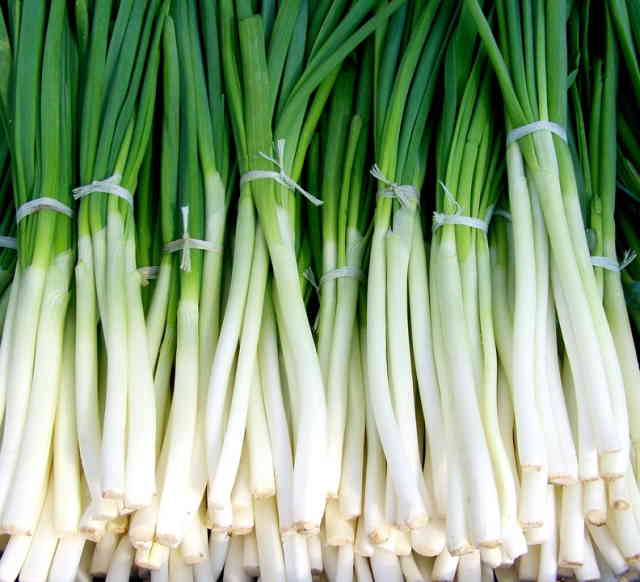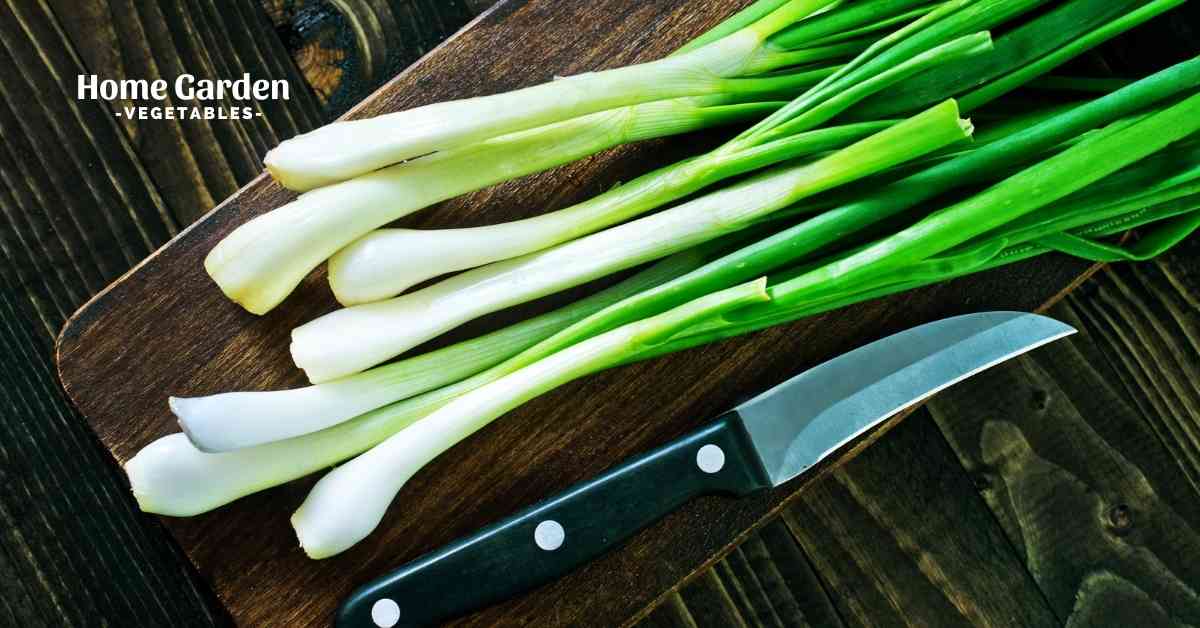Green onions and chives are two alliums that will often confuse you. Though they might look the same at first glance, the flavors, smell and texture are different. Knowing the differences between the two can help you explore new flavors and aromas for your dishes. Also, when a recipe includes chives or green onions, you want to be able to pick just the right ingredient to enjoy the best taste.
Continue reading and we’ll walk you through the two beautiful vegetables until you’re confident on which is which.
Reader Poll: What online courses would interest you?

What Are Green Onions?
Green onions are simply onions that are harvested early, before they get a chance to form the bulb completely. There’s a small, narrow bulb at the bottom, with its size depending on when you harvest the onion. Green onions can come from different varieties of onions (A. cepa), as long as you harvest them before the bulb develops fully.
The stems are long and hollow and the leaves are dark green. White roots are visible under the bulb. If you remove the roots, the entire plant is edible, together with the stems, leaves and immature bulb. Green onions have a milder flavors than that of mature onions and can be used as a herb in many dishes. You can use it fresh in salads or slightly cooked in omeletes and stir fries.
What Are Chives?
Chives (Allium schoenoprasum) is a flowering plant from the Amaryllidaceae famly. Onions, leeks and garlic also belong to the same family. Chives are perrenials grown in many regions of Europe, Asia, and North America.
Subscribe to our newsletter!
They are a commonly used herb available in grocery stores. Chives are also a popular species to grow in home gardens. The green stalks, or stems, and immature flowers are edible and make an excellent addition to a number of dishes, including omelettes, fish, soup, and mashed potatoes. Chives are usually added towards the end of the cooking process or for garnishes to enjoy the best flavors and smell.
How Are They Different
To a casual cook, chives and green onions may look the same, but if you aspire to be a culinary expert, chives and green onions are different. Let’s highlight the key differences so you know which one to use where to bring out the best in your recipes.
Here’s are some of the key differences between the two vegetables:
| Green Onions | Chives | |
| Full Name | A. cepa | Allium schoenoprasum |
| Stems | Stems are white at the bottom and green at the top. | Stems are green all the way from the bottom to the top. |
| Taste | The taste is stronger than chives, but milder than onions. | Milder onion-y flavor. |
| Cooking | They can withstand heat better than chives, but it’s still better to add them near the end of cooking. | Chives cannot withstand heat. Add them as a garnish or at the end of cooking. |
| Culinary Uses | Uses: dips, salads, stir fries, and omelletes. | Mashed potatoes, cream cheese spread, butter, fish, omelletes and soups. |
Can They Substitute Each Other?
There isn’t a culinary police, is there? So, yes! You can definitely use one in place of another. They’re both excellent, mild, onion-y flavored herbs that will work great in many recipes. As long as you only cook them lightly or add them as a garnish, they’ll bring mild flavors and aromas to the dish and a fresh pop of color to brighten it up!
However, when substituting these herbs, keep in mind that green onion is a bit more pungent than chives. So you may want to adjust the quantity of the herb or the other spices to balance out the flavor. Chives can also go in stir fries if you don’t have green onions. The only thing you need to remember is to put chives at the end to prevent spoiling its texture and flavor with the heat.
What About Scallions?
Yes, there’s yet another lookalike that can leave you confused – scallion. How do scallions fit into the picture? Scallions, are very closely linked to green onions. In fact, at many sources on the web, you’ll find them used interchangeably, and rightly so because they come from the same species. Both are A. cepa. The species A. cepa includes a wide collection of onion varieties. While all onions are called green onions when they’re immature, a specific variety of onions are called “bunching onions” or scallions.
So scallions, or bunching onions, are a special type of green onion. What’s different about this variety from the others is that they don’t form a bulb even when mature. Similar to green onions, scallions are also harvested young, while the stems are still green and fresh.
Above the roots, instead of a round bulb, you’ll find a straight stem that’s white at the base and green at the top part. The white portion of the stem has a stronger onion-y flavor while the green part is milder. You can use it in much the same way as green onions. You can use it as a fresh garnish for soups, stews, fish or chicken or cook them lightly into stir fries or omelletes.
Storing Green Onions, Scallions and Chives
They’re all delicate vegetables that won’t last very long. They’re best used fresh. However, you can still keep them in the fridge to last for a few days. For best results, wrap the roots in damp paper towel. Put the rest of vegetable loosely inside a plastic bag. Use them while the stalks look fresh and crisp which is usually up to 4 to 5 days.
Conclusion
Though green onions and chives are NOT the same thing, they’re both excellent herbs to bring mild, fresh flavors and pleasant aromas to the dinner table. Add them to all your favorite recipes and see how they brighten up the presentation.

